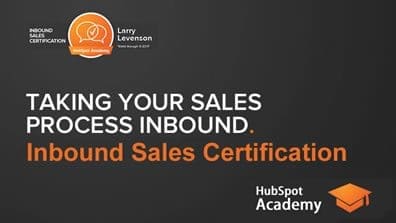
1. Inbound sales is not legacy sales practices warmed over
Inbound sales is based on 2 philosophies:
- Inbound sales teams base their entire sales strategy on the buyer rather than the seller.
- Inbound salespeople personalize the entire sales experience to the buyer’s context.
You can see from these philosophical statements that the power in the buying and selling process has shifted from the seller to the buyer. With that in mind, inbound sales transforms traditional sales to match the way that people buy today.
2. The inbound sales methodology supports the buyer’s journey
Inbound sales teams build a sales process that supports the buyer through their journey. As a result, the salesperson and the buyer feel like they are aligned, rather than at odds with one another, through the buying and selling process.
The four stages of the inbound sales process are Identify, Connect, Explore, and Advise.
- Identify. Identify strangers who have goals or needs we can help with. These strangers become leads
- Connect. Connect with these leads to help them decide whether they should prioritize the goal or the challenge. If it is, these leads become Qualified Leads.
- Explore. Explore the goals or challenges with the lead to assess whether the offering is a good fit for their needs, their context. If it is, then these leads become Opportunities.
- Advise. Advise these opportunities on the ways their offering is uniquely positioned to address the buyer’s context. If the buyer agrees that the offering is the best one for them, they become Customers.
3. Define the company that is your Ideal Buyer Profile
This is quite different from your buyer personas. Identifying your Ideal Buyer Profile looks at companies. and is typically based on:
- industry
- number of employees
- geography
but may also include other company-level descriptors. These are companies that you can help with your product or service. companies that are outside of this target should be ignored, as they are not your “best fit” companies.
When defining your Ideal Buyer Profile, ask questions like:
- Are there company sizes that are ideal, or not ideal? Do you define size as employees, revenue, customers, or another metric?
- Are there industries/verticals that are ideal, or not ideal?
- Are there geographic locations that are ideal, or not ideal?
- Are there other attributes of your buyer’s customer that make the buyer ideal, or not ideal?
Do not confuse buyer personas with the Ideal Buyer Profile. The Ideal Buyer Profile identifies which companies are a good fit for your offering and which companies are not. Buyer personas identify the buying behavior of different companies and with of people with those companies who fit your buyer persona.
4. Setup a Connect strategy that your sales team can follow
HubSpot’s Inbound Sales Certification training include a lot of processes, including one for how your salespeople execute the prospecting stage, or Connect stage, of the methodology. Here is an excerpt from that process.
- Define your buyer personas
- Define the sequences for each persona. Sequences are outreach strategies like the medium(s) that you will use to connect, time-of-day for the connection, how many times you’ll try to connect over what period of time, etc.
- Define the outreach content for each sequence. The goal is to support and educate them on the awareness journey and to begin to establish trust and thought leadership.
- Develop outreach content for these lead sources
- Inbound leads. Accounting for the buyers’ interests in the connect outreach is the most important and most effective form of personalization.
- Inbound companies. These are companies that show up in your Prospects report where someone has visited your website (maybe multiple times) and has not yet converted on one of your forms. There is a whole process for connecting with the right person at these companies.
- Trigger events are things like, new hiring, mergers, new products or service offerings, etc. Generally, these might all fall into company press releases.
- Common connections. These are connections that are your own or are only one-step removed from you. Your own LinkedIn connections would fall into this category, as well as your sales person’s friend who works at another company that might need your product or services.
- Non-traditional mediums include things like the prospect’s company has a blog, the prospect is active on social media, or conducting a webinar, or is hosting or speaking at an event.
HubSpot provides a suggested conversation for each one of these lead sources.
5. The framework for an exploratory conversation
Having a framework for the exploratory conversation ensures that you don’t miss details that are important in understanding your buyer’s context. It also provides a structure for communicating your prospect’s story back to them, letting them know that you heard them.
The exploratory call covers:
- Challenges
- Goals
- Plans
- Timelines
- Consequences
- Implications
- Budget
- Authority
Again, HubSpot provides details on this framework, including a sample script.
6. (Inbound) Sales training is now “in the can”!
Many of our clients struggle with orienting their sales team around inbound marketing. But no longer! Now that HubSpot has the Inbound Sales Certification, 6 hours of training will get your sales team on the right track — then there will be several hours of conversations over time to put all the pieces in place.
By providing this training, and many processes that you can follow in your sales work, HubSpot has taken a huge leap forward for our sales teams. With an effective inbound marketing program, paired with highly trained and effective inbound sales team, you can really rock your results and drive ROI!
Start your Inbound Sales Certification here.
Many companies that use marketing automation find that their results start flagging after an initial boost. If you’re not satisfied with your HubSpot results, attend our webinar on April 19th — we’ll share two practices that we’ve developed that will get you back on track.
